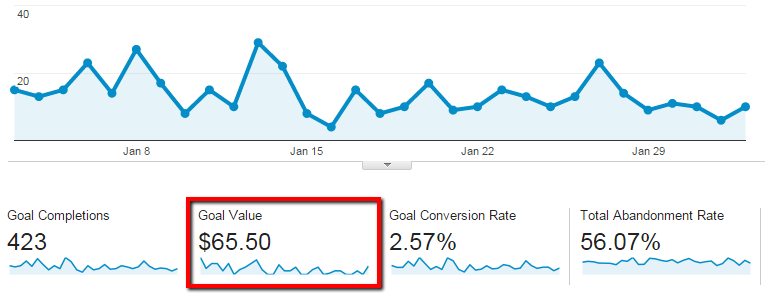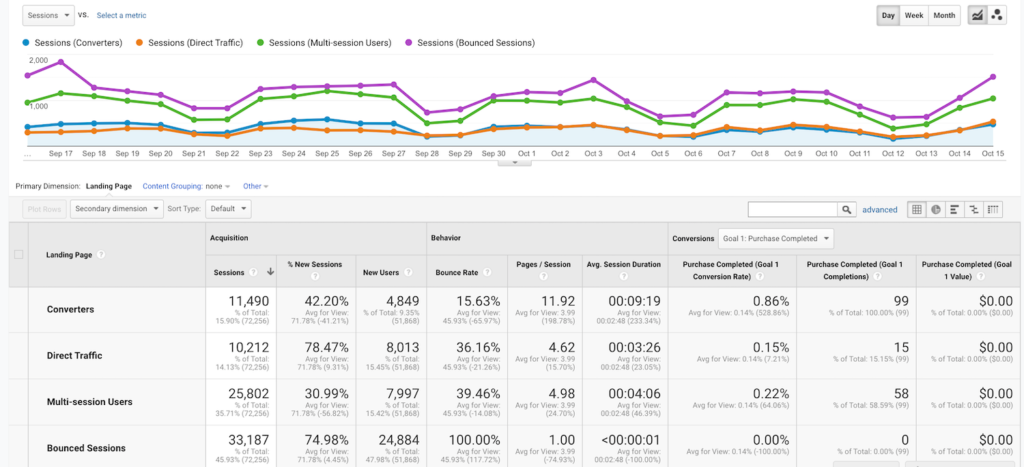Find Out What Data Is Google Analytics Goals Unable to Track
Find Out What Data Is Google Analytics Goals Unable to Track
Blog Article
Discover the Limitations of Google Analytics Goals: Introducing the Data Types That Remain Untrackable
As services increasingly depend on data-driven decision-making, recognizing the constraints of devices like Google Analytics comes to be vital. While Google Analytics Goals deal valuable insights right into user interactions, there exist data types that thwart tracking, positioning difficulties to an extensive understanding of user habits. These untrackable data kinds question about the accuracy and completeness of the analytics data that organizations heavily rely upon for their electronic methods. Curious to uncover the covert unseen areas in your data analysis procedure?
Incomplete User Journey Tracking
Insufficient customer trip tracking within Google Analytics can impede the capability to properly analyze user habits. When the user trip is not completely tracked, there are spaces in the information that avoid a detailed understanding of how customers engage with a site. This lack of understanding can lead to missed out on possibilities for optimization and improvements to the individual experience.
One typical problem with insufficient user trip monitoring is the lack of ability to see the full course that users take before finishing an objective or leaving the website. Without this information, it is testing to recognize where individuals may be running into obstacles or rubbing factors that avoid them from converting. Furthermore, insufficient tracking can cover the impact of certain advertising and marketing initiatives or internet site modifications on user habits.
To address this limitation, it is important to establish up proper tracking mechanisms within Google Analytics to catch the entire individual journey. This may involve establishing event tracking, objective funnels, or using tools like Google Tag Supervisor to make sure that no important communications go unrecorded. By gaining a thorough view of the user trip, internet site owners can make more enlightened decisions to enhance user engagement and drive conversions.
Attribution Difficulties
Browsing with attribution challenges in Google Analytics requires a thorough understanding of exactly how different touchpoints add to the overall conversion process. Attribution difficulties arise from the intricacy of modern-day consumer trips, where individuals communicate with multiple channels before transforming.
One common acknowledgment difficulty is the trouble in attributing conversions to the right source, specifically in cases where customers connect with numerous channels before converting. This can lead to errors in identifying which advertising and marketing efforts are driving one of the most conversions. Furthermore, cross-device monitoring postures another acknowledgment challenge, as customers often change in between gadgets throughout their trip, making it testing to track their interactions perfectly. Marketing professionals have to carefully assess and translate acknowledgment data to make enlightened choices and enhance their advertising and marketing methods effectively.
Offline Conversions
Provided the obstacles related to attributing conversions properly in online networks, the dimension of offline conversions offers a significant possibility for marketing experts seeking a more comprehensive understanding of their consumers' journey. Offline conversions describe actions that customers absorb the real world, such as making purchases in brick-and-mortar shops or over the phone, attending occasions, or engaging with published materials - what data is google analytics goals unable to track. These conversions are essential for companies that operate both online and offline, as they give important insights into the performance of advertising and marketing projects across numerous touchpoints
Tracking offline conversions commonly presented a substantial challenge for online marketers, as it was testing to link these activities back to certain on-line communications properly. With advancements in modern technology, such as the integration of CRM systems, special identifiers, and promo code codes, organizations can now connect the gap in between online and offline data to acquire an extra holistic view of customer behavior. By effectively gauging offline conversions, online marketers can maximize their approaches, designate resources more efficiently, and inevitably improve the general consumer experience.
Cross-Device Monitoring
Cross-device tracking plays an important role in understanding the interconnected nature of consumers' digital interactions throughout multiple devices. In today's omnichannel world, where customers perfectly change in between desktop computers, tablet computers, and mobile phones, tracking their actions across these gadgets is vital for marketing professionals to get a detailed view of their customer trip.

Furthermore, privacy concerns and policies such as GDPR and CCPA have better challenging cross-device tracking. With users demanding even more control over their data and increased constraints on monitoring innovations, marketers should locate privacy-compliant and cutting-edge methods to attach individual communications throughout devices.
Dynamic Material Engagement
Recognizing customer involvement with vibrant web content is critical in maximizing digital marketing strategies for enhanced target market communication. Dynamic content describes site aspects that transform based on customer behavior, choices, or various other factors, supplying an individualized experience. Nevertheless, tracking customer communications with vibrant material poses obstacles for conventional analytics devices like Google Analytics.
While Google Analytics can track fundamental communications like clicks and page sights, it may have a hard time to capture more nuanced engagements within dynamic web content. what data is google analytics goals unable to track. Metrics such as time invested on certain vibrant aspects, float actions, or interactions within pop-ups are typically not easily quantifiable using common tracking techniques. This constraint prevents marketing professionals' capacity to totally understand how individuals are engaging with dynamic web content and tailor their techniques as necessary

Verdict
To conclude, Google Analytics goals have restrictions in tracking insufficient customer journeys, attributing conversions accurately, capturing offline conversions, tracking cross-device interactions, and determining dynamic web content involvement. These constraints highlight the importance of exploring added tracking see approaches and tools to gain a much more detailed understanding of customer habits and conversions past what Google Analytics can supply.
While Google Analytics Goals offer beneficial understandings into user communications, there exist data types that thwart tracking, posturing difficulties official statement to a thorough understanding of customer habits.Insufficient individual trip tracking within Google Analytics can prevent the capacity to accurately assess customer actions. When the user trip is not totally tracked, there are gaps in the information that prevent a comprehensive understanding of how customers connect with a web site.One typical concern with insufficient user journey monitoring is the inability to see the full course that users take before finishing a goal or leaving the site. By getting an extensive view of the individual journey, internet site proprietors can make even more enlightened decisions to improve individual involvement and drive conversions.
Report this page